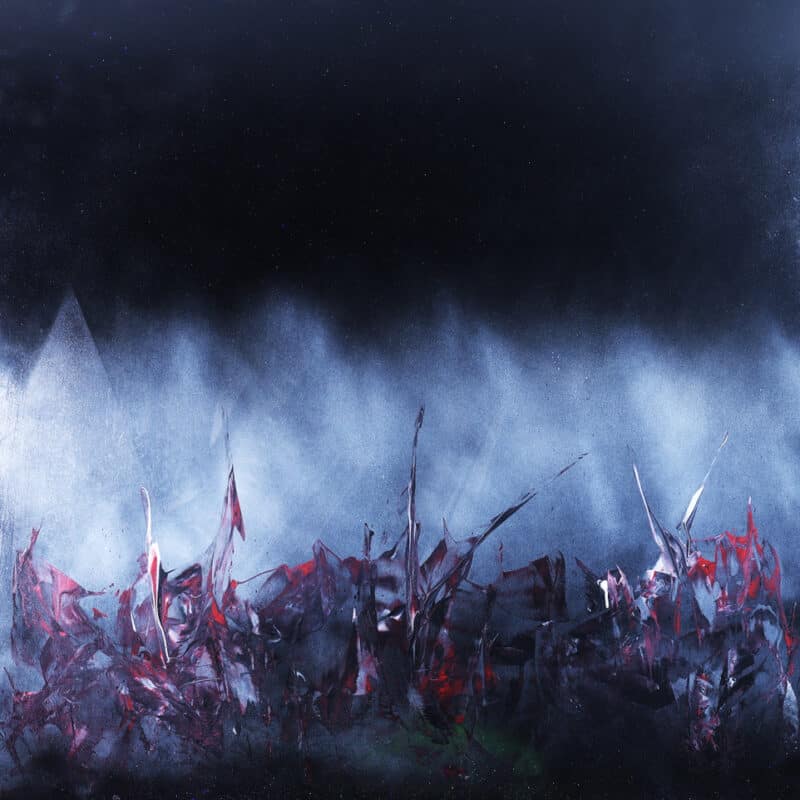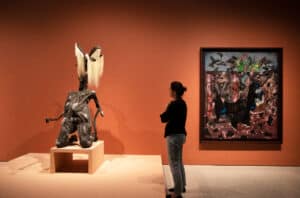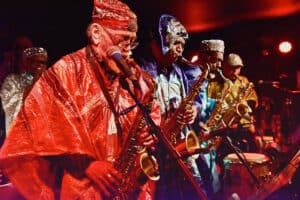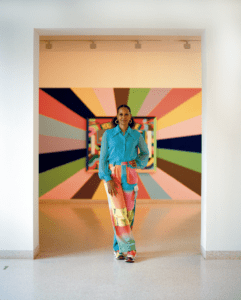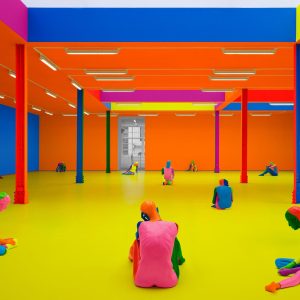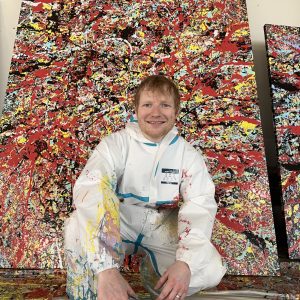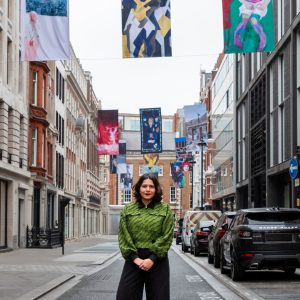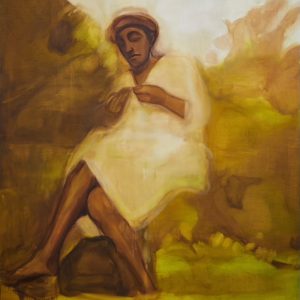Mark Sealy curates an extraordinary exhibition at the Autograph Gallery, showcasing Wilfred Ukpong’s fusion of Afrofuturism and dystopian imagery. Through 10 captivating large-scale images and two immersive video installations, “Niger-Delta/Future-Cosmos” delves into the depths of environmental exploitation in the Niger Delta River. Ukpong’s work offers a poignant reimagination of the future, intertwining Indigenous activism with a powerful narrative on the ongoing environmental crisis.
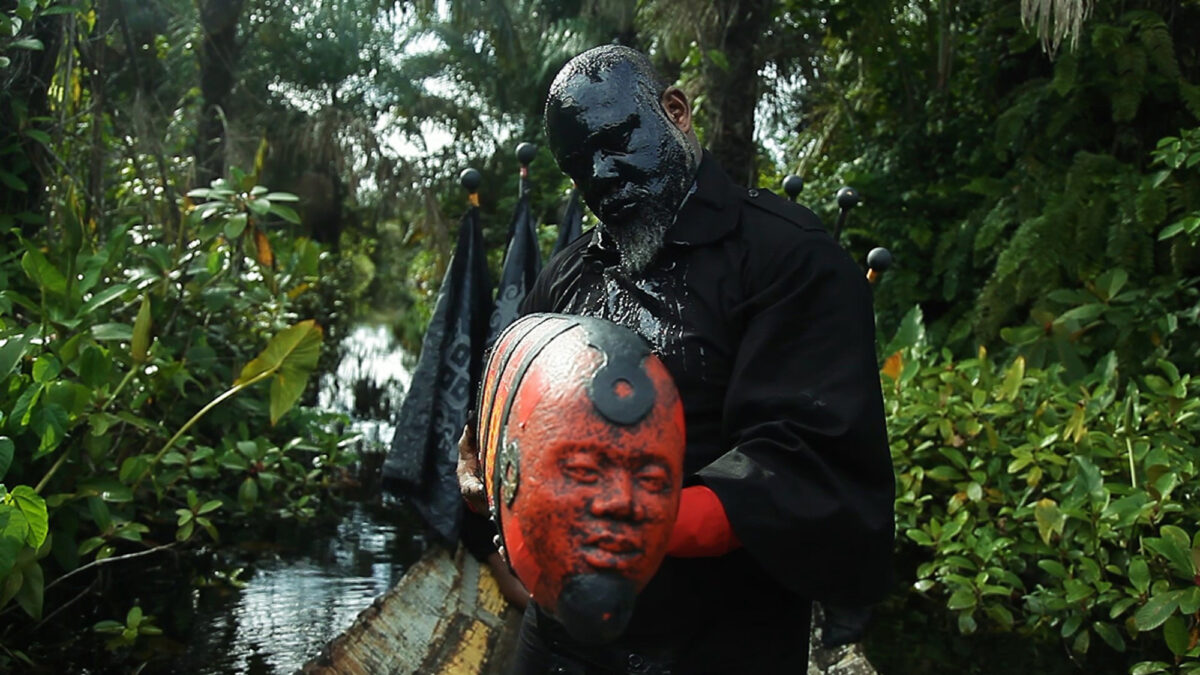
The Niger Delta region stands as a vital economic powerhouse for Nigeria, fuelled by its abundant biodiversity and extensive oil reservoirs. Rooted in a history of palm oil exploitation under British colonial rule, the region’s economic significance persists today. However, this ecological prosperity is devastated by the ongoing exploitation facilitated by negligent actions of oil and gas industry giants, leading to significant pollution through major spills and flares in the area.
Abosede Omowumi Babatunde’s research, “Oil, Environmental Conflict, and the Challenges of Sustainable Development in the Niger Delta,” reveals the profound impact of oil extraction on the region. Babatunde states that the Niger Delta region stands as one of the world’s most heavily oil-polluted areas, experiencing upwards of 300 oil spill incidents annually. These spills wreak havoc on agricultural land, water reserves, and the communities reliant upon them for sustenance.
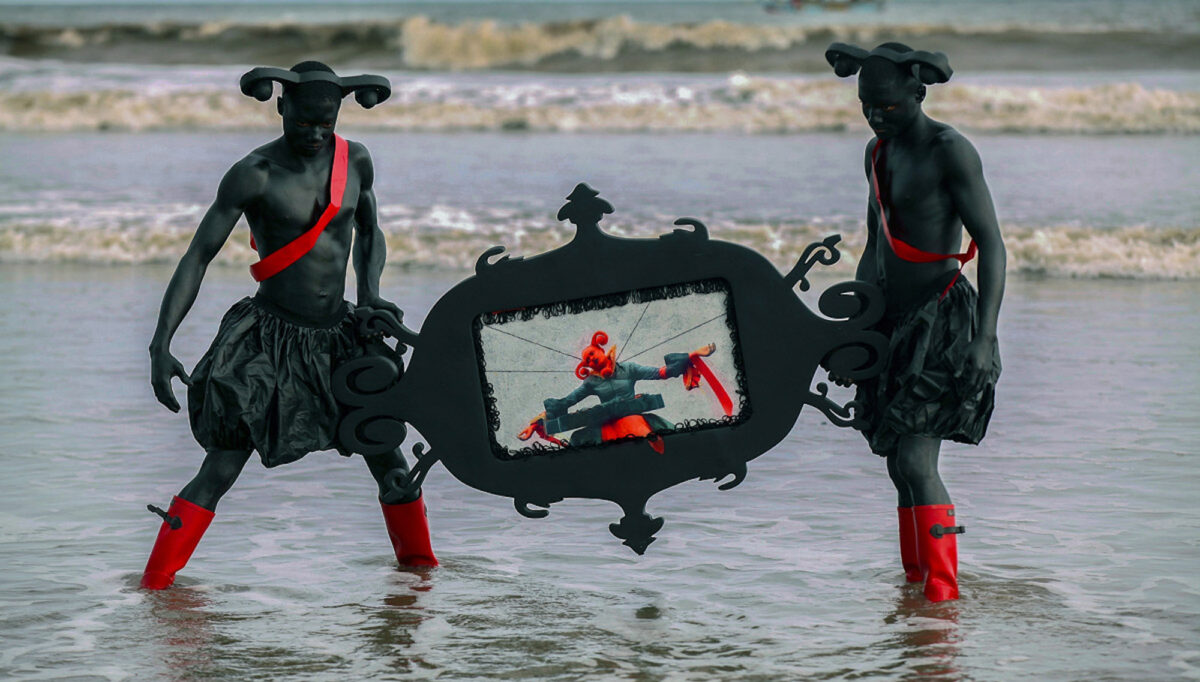
Ukpong explores the environmental crisis through an Afrofuturist and mystical photographic perspective, envisioning a dystopian future that serves as a stark warning. His aim is to highlight the urgent necessity of taking decisive action to mitigate the impending environmental challenges.
Exploring the concept of Afrofuturism through my work is a way of envisioning a society free from social bondages and political oppression. It’s important to showcase the ways in which artistic, cultural, and technological progress in the African continent are reimagining perspectives on environmental crises, social injustice, race, gender, identity, and the body in the 21st century … to play on a larger context of work that takes traditions, local symbolism and myths from the past, to speculate on the future as a way of informing our actions in the present.
– Wilfred Ukpong
At the core of Ukpong’s work is community participation as a means for lasting, sustainable change. He worked with over 200 youths from marginalised communities in oil-producing areas across the Niger Delta. A significant number of these young individuals have actively participated in or contributed to the creation of the artworks showcased in the exhibition.
This is exemplified in “FUTURE-WORLD-EXV,” a 16-minute short film with no dialogue that depicts a dystopian/Afrofuturistic future. The film follows the journey of an oil worker in the region, torn between fulfilling his responsibilities in the oil industry and reckoning with his complicity in the escalating environmental degradation perpetuated by the very company he serves. Throughout his journey, he encounters a waterborne Indigenous community and their sea goddess, who becomes his guiding force as he navigates the intricate layers of his moral dilemma and strives to confront the overarching issues at hand.
Community history, ecology politics, indigenous environmentalism, extractive capitalism, and cultural evolution, these meditations on my homeland demonstrate how the art and filmmaking process can be employed to promote youth empowerment, challenge colonial narratives and disrupt systems of knowledge production.
– Wilfred Ukpong
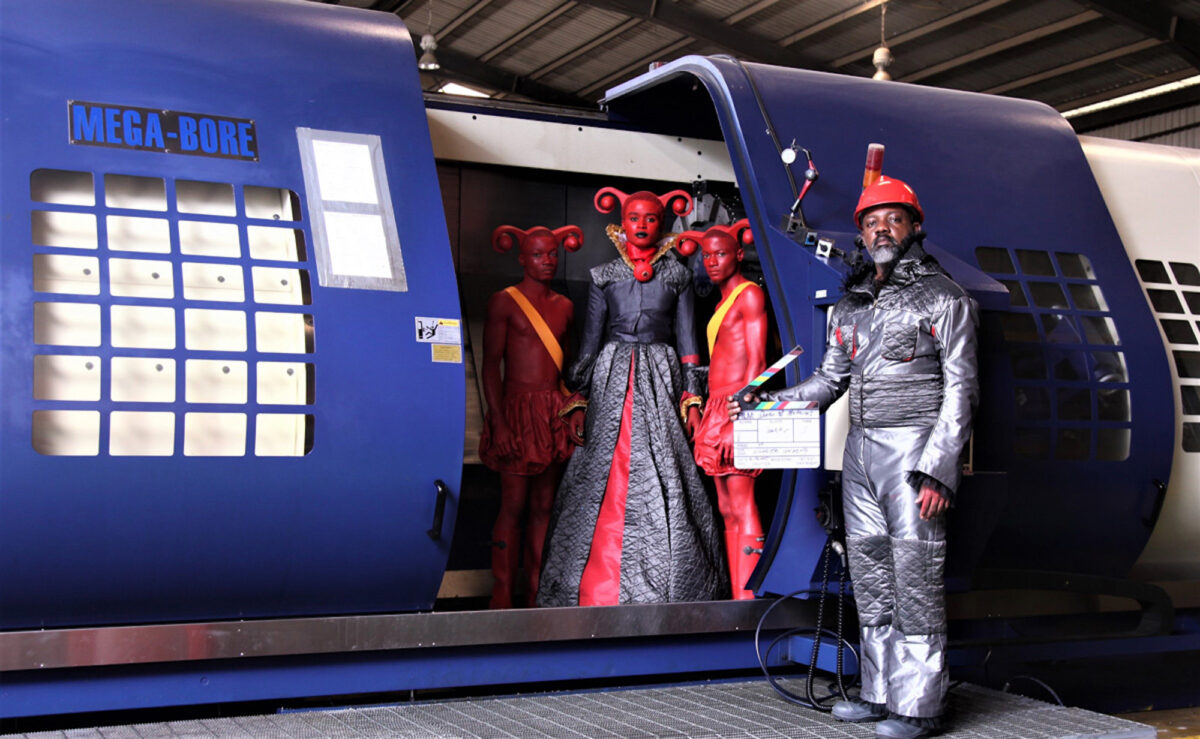
The curatorial strategy employed in this exhibition utilises spatial dynamics to facilitate conversation between photographs in the gallery space, adding a visual narrative for the viewer to decipher as they navigate the space.
A standout curatorial touch lies in the positioning of the two images “Are my Dreams Too Bold for the Carbon Skin I Bear #1?” and “Are my Dreams Too Bold for the Carbon Skin I Bear #2?”, which directly face each other on opposite ends of the gallery space. This deliberate placement creates a visual dialogue between the two artworks, inviting viewers to explore the contrasting perspectives and themes depicted in each image. This juxtaposition not only adds depth to the exhibition but also encourages viewers to engage critically with the subject matter, fostering a nuanced understanding of the complex issues at hand. I found the colouring of the subjects’ skin particularly captivating. The deep, lustrous complexion creates a striking contrast, juxtaposing the inherent beauty of Blackness with the appearance of oil spillage, almost as if the skin is enveloped in a glossy sheen.
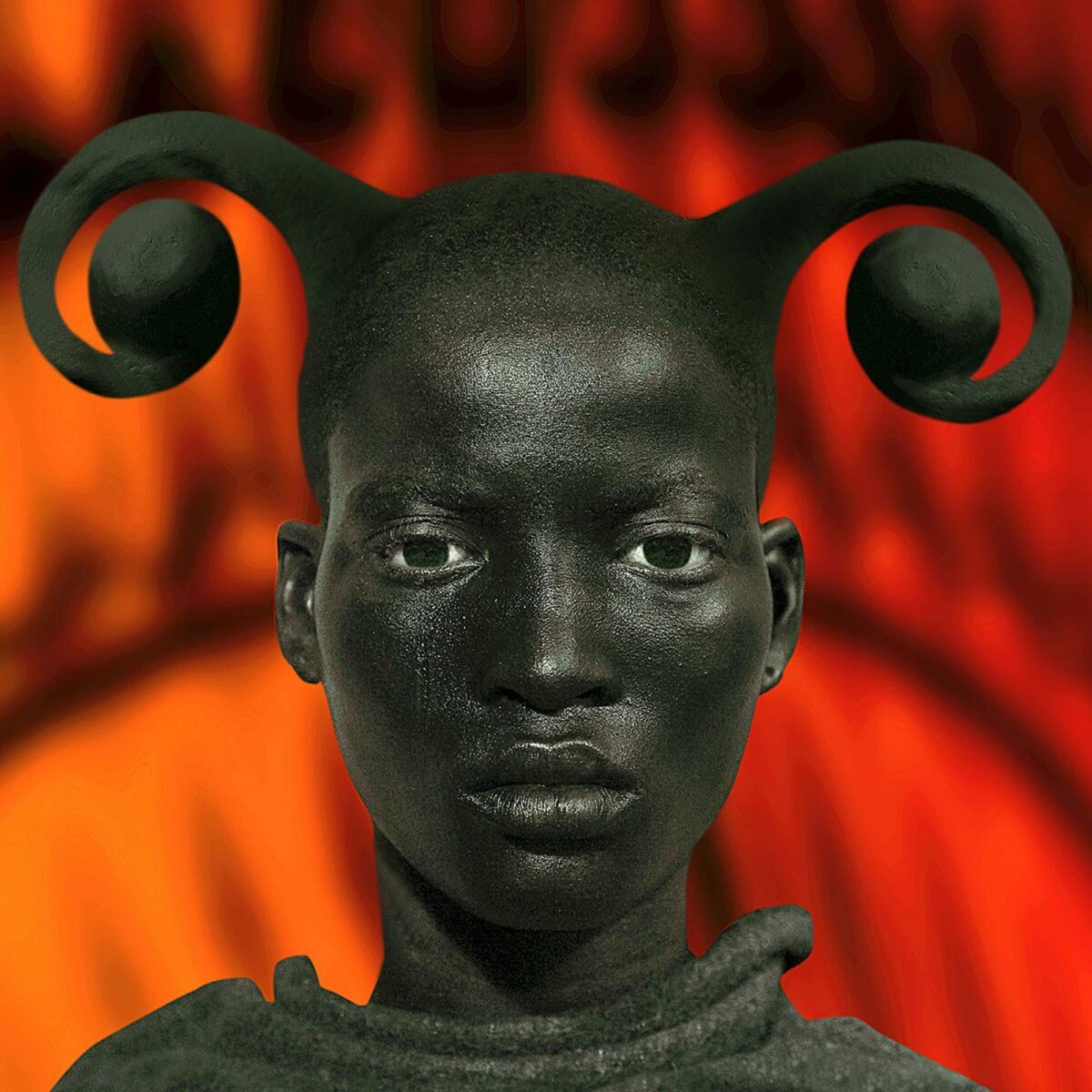
The frames, adorned with a black PVC coating resembling an oil spill, serve as a provocative visual metaphor, drawing attention to the environmental themes explored in the photographs. This intentional selection serves a dual purpose: it not only strengthens the unity of the exhibition but also enriches the viewer’s tactile experience by introducing a three-dimensional texture.

Wilfred Ukpong, “Niger-Delta/Future-Cosmos”, – 1st Jun 2024, Autograph
All images courtesy the artist and Autograph
About the artist
Wilfred Ukpong is a French Nigerian interdisciplinary artist and researcher whose distinctive socially engaged practice utilises several interwoven mediums including photography, film, sculpture, performance and creative workshops to tackle pertinent social issues with community participation and intervention.
Ukpong’s works have been exhibited at Alliance Française/Mike Adenuga Centre (Nigera), FotoFest, Houston (USA), Institut Français du Nigeria Abuja (Nigeria), MARKK Museum Hamburg (Germany), Pipe Factory Glasgow (UK), Royal Society of Arts, London (UK), Welt Museum Vienna (Austria) amongst others. His long-term project Blazing Century 1 received a special grant from the Prince Claus Fund Amsterdam (2010); his film Future World (2017) won the Golden City Gates Excellence Award at ITB Berlin (2018). Ukpong received his BA/MA in Fine Arts from Ecole Supérieure d’Art Lorient, France and his PhD from Oxford Brookes University (UK). He lives and works between Oxford (UK), Clermont-Ferrand (France), and Eket (Nigeria)
